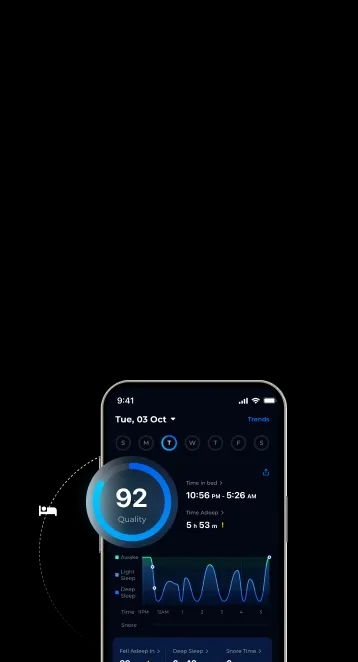


Struggling with sleep apnea and restless nights? Sleep apnea, a condition marked by interrupted breathing during sleep, can range from mild sleep apnea to severe one. To alleviate sleep apnea symptoms and sleep more comfortably, many people are turning to the best pillows for sleep apnea.
In this blog, we’ll delve into the top five pillows designed to address different sleeping positions and levels of sleep apnea severity. Whether you’re dealing with severe sleep apnea or you just want to sleep comfortably, choosing the appropriate pillow can make all the difference.
Here is a full list of our top picks and what they are best for. For full details of each pillow from pros and cons to prices, you may jump to the individual review section by clicking on the buttons below.
Best overall: EnduriMed CPAP Pillow
Best for CPAP users: Lunderg CPAP Pillow
Best wedge pillow: Cozymaker Wedge Pillow
Best pillow for back sleepers: Sidney Sleep Pillow
Best adjustable pillow: DreamyBlue Premium Pillow
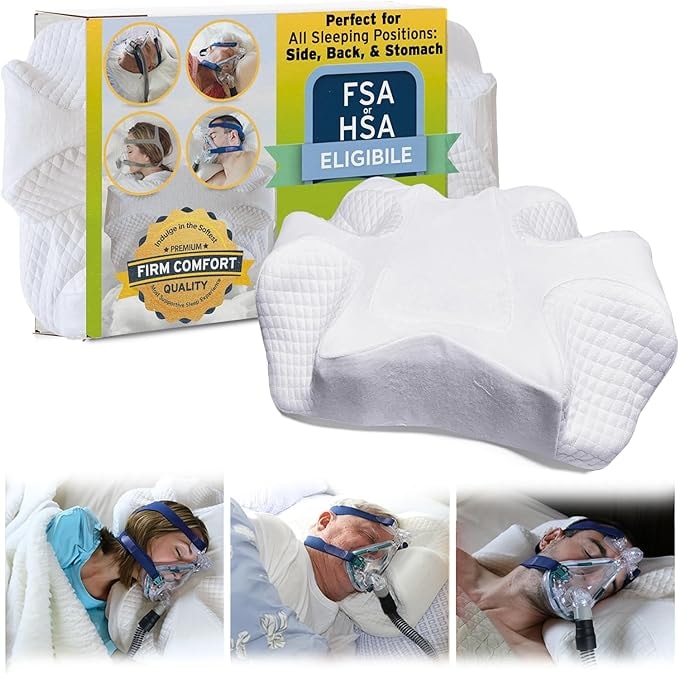
EnduriMed CPAP pillow is designed to help you rest and relax easily. With removable insert pads, you can increase or decrease the firmness level of your pillow. What is great about this pillow is that works for those who have to wear full face masks at night and it keeps tangles from the tubing out of the way. It is also designed to accommodate people of all sleeping positions– side, back and stomach. This means that you can switch positions and still sleep comfortably.
Fill material: Memory Foam
Special features: Cooling, Adjustable
Pros:
Cons:
Rating: 4.1/5
Price: $74.99
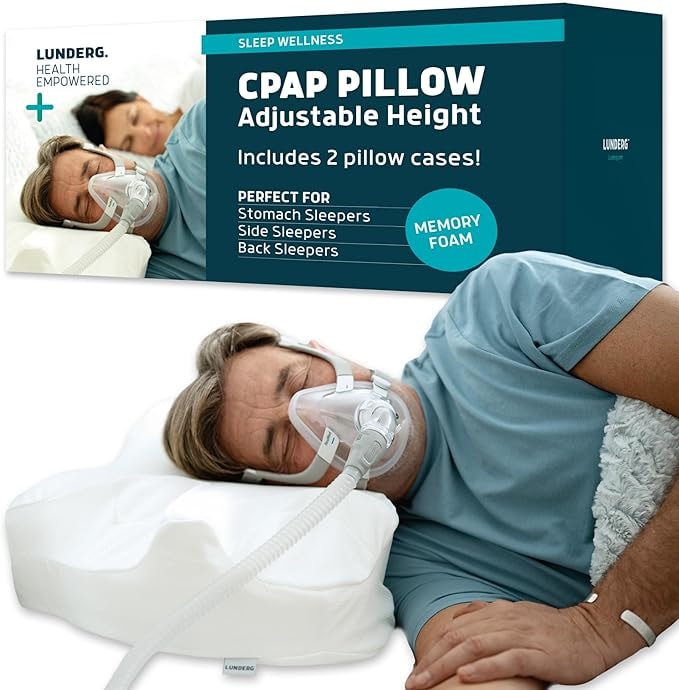
Lunderg CPAP pillow can help you to sleep all night long and experience the best comfort. The ergonomic design of this pillow is made to support side, back and stomach sleepers. The design also fits most CPAP masks as it reduces mask leaks, and tangled tubes and relieves pressure from mask-wearing.
Fill material: Memory Foam
Special features: Cooling, Adjustable, Removable Cover
Pros:
Cons:
Rating: 4.3/5
Price: $79
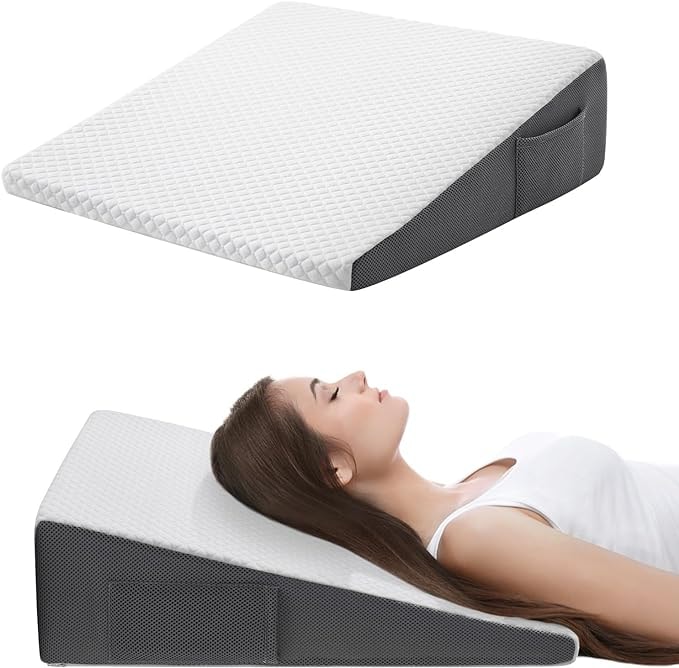
Cozymaker Wedge Pillow is designed to help you get a good night’s sleep. It is certified by CertiPUR-US. It is combined with an upgraded ergonomic design that features an aviation-grade memory foam top and high-density medical-grade foam core to ensure that pressure is relieved from the whole body while resting. The good thing about this pillow is that it is also multipurpose so it is not just for snoring.
Fill material: Memory Foam
Special features: Washable, Removable Cover
Pros:
Cons:
Rating: 4.5
Price: $45
Buy on Amazon
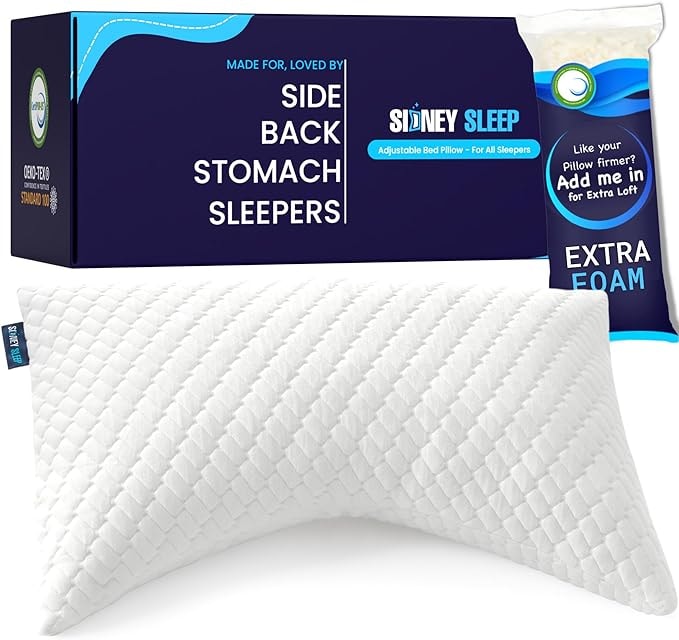
Sidney Sleep Pillow is an adjustable curved shaped pillow that is suitable for spinal alignment. The curved shape provides ample support for your head and neck, helping the muscles to relax. This also helps to reduce snoring as the upper airways are supported properly. It is also great for those who sleep on their back.
Fill material: Shredded Memory Foam Blend
Special features: Adjustable, Contoured Hugging Curve, Removable Cover
Pros:
Cons:
Rating: 4.3/5
Price: $55-$220
Buy on Amazon or Sidney Sleep
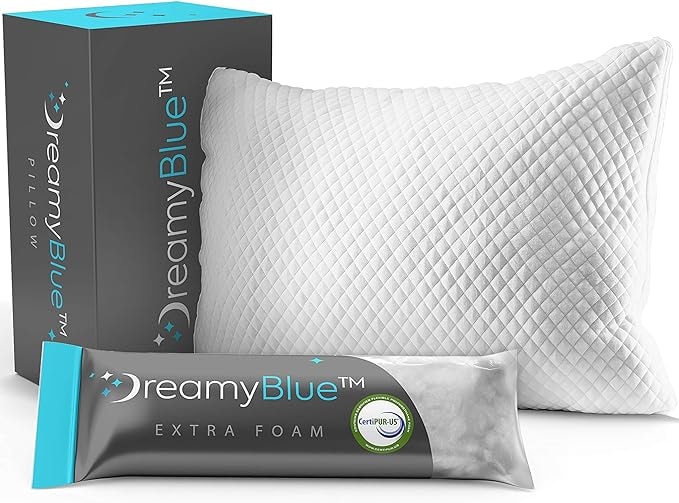
The DreamyBlue Premium Pillow is designed to provide customizable comfort and support with its adjustable memory foam fill. It caters to various sleeping positions, helping to ensure proper spinal alignment and alleviate neck and shoulder pain. This can also assist individuals with sleep apnea to keep the airway open during sleep.
Additionally, the breathable bamboo cover ensures a cool sleeping environment for overall comfort.
Fill material: Memory Foam
Special features: Hypoallergenic, Washable
Pros:
Cons:
Rating: 4.4/5
Price: $75-$95
Buy on Amazon or DreamyBlue
According to a survey, about 55% of American adult females said that sleep significantly influenced their mood. Sleep apnea may be one of the factors contributing to poor sleep quality. When it comes to improving sleep quality for individuals dealing with sleep apnea, choosing the right pillow can make a significant difference. Before you rush into purchasing a sleep apnea pillow, there are several important factors to consider.
Determine whether you have obstructive sleep apnea (OSA) or central sleep apnea (CSA) as the pillow’s design and features may vary based on the type of sleep apnea you have.
The type of sleep apnea you have may influence the choice of pillow, as some designs and features are better suited to one type over the other.
Sleep apnea pillows come in various designs, with some featuring elevated or contoured shapes. These designs are aimed at maintaining proper head and neck alignment, which can help keep the airway open during sleep. Choosing the right pillow with a contoured shape, for instance, may be more beneficial for individuals with OSA, as it can provide better support for the head and neck, ensuring appropriate pillow height and pressure relief, in a way that promotes unobstructed breathing.
Your typical sleep position, whether it’s on your back or side, plays a crucial role in selecting the right sleep apnea pillow. Individuals with OSA often find relief by sleeping in specific positional sleep positions, particularly on their sides. This position can effectively prevent the tongue and soft palate from collapsing backward and blocking the airway.
However, suppose your head-elevated-preferred sleep position is on your back. In that case, your focus should be on finding a pillow that offers adequate neck and head support to maintain proper alignment and minimize apnea events. For stomach sleepers, it’s crucial to find a pillow that provides gentle support to keep your head and neck in a neutral position, reducing the risk of airway obstruction during sleep.
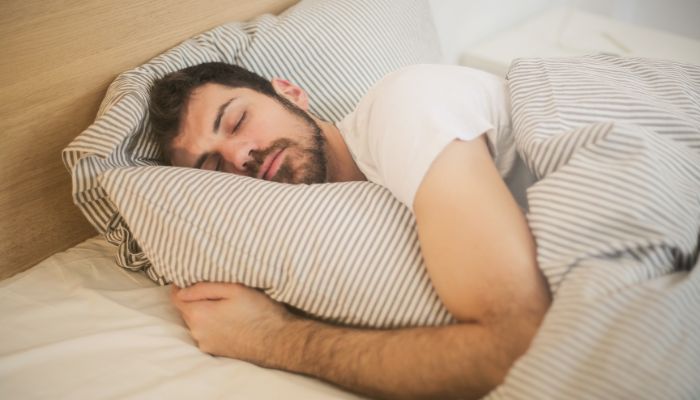
If you use a Continuous Positive Airway Pressure (CPAP) machine to manage your sleep apnea, it’s vital to choose a pillow that is compatible with this therapy. Some sleep apnea pillows are designed to accommodate CPAP masks and tubing, ensuring that they stay in place during the night and don’t interfere with your therapy. This compatibility can contribute to a more effective and comfortable sleep apnea treatment.
While investing in a quality sleep apnea pillow is essential for your sleep health, it’s also important to consider your budget. Sleep apnea pillows come in a range of price points, so determine how much you’re willing to spend and look for options that offer the best value for your investment.
Choosing a sleep apnea pillow that suits your sleeping preferences is necessary since they all come in various designs and materials. For instance, if you often sweat a lot while you sleep, you may want to look for a cooling pillow.
You might pick a different pillow if you already use a CPAP since some are made primarily for comfort while wearing a mask.
Here are the most popular types of pillows for sleep apnea:
Sleep apnea can disrupt getting a conducive night’s rest. However, there are ways to alleviate this condition through methods like the use of specific pillows to minimize snoring and make sleep a little more comfortable. At the same time, you should recognize that this is not a cure for sleep apnea. You should still consult with medical professionals for the best treatment plan.
To keep track of your snoring levels and whether you may be at risk for sleep apnea, consider trying out ShutEye, a patented sleep-tracking app. Find out details about your sleep cycles and whether you’ve snored at night. You can even do a sleep study within the app!
Note: ShutEye is unable to give you a proper diagnosis for any medical conditions. It can only detect risks and provide appropriate suggestions. Do consult a medical professional for proper diagnosis and treatment options.
Aurora, R. N., Collop, N. A., Jacobowitz, O., Thomas, S. M., Quan, S. F., & Aronsky, A. J. (2015). Quality measures for the care of adult patients with obstructive sleep apnea. Journal of clinical sleep medicine : JCSM : official publication of the American Academy of Sleep Medicine, 11(3), 357–383. https://doi.org/10.5664/jcsm.4556
Joosten, S. A., O'Driscoll, D. M., Berger, P. J., & Hamilton, G. S. (2014). Supine position related obstructive sleep apnea in adults: pathogenesis and treatment. Sleep medicine reviews, 18(1), 7–17. https://doi.org/10.1016/j.smrv.2013.01.005